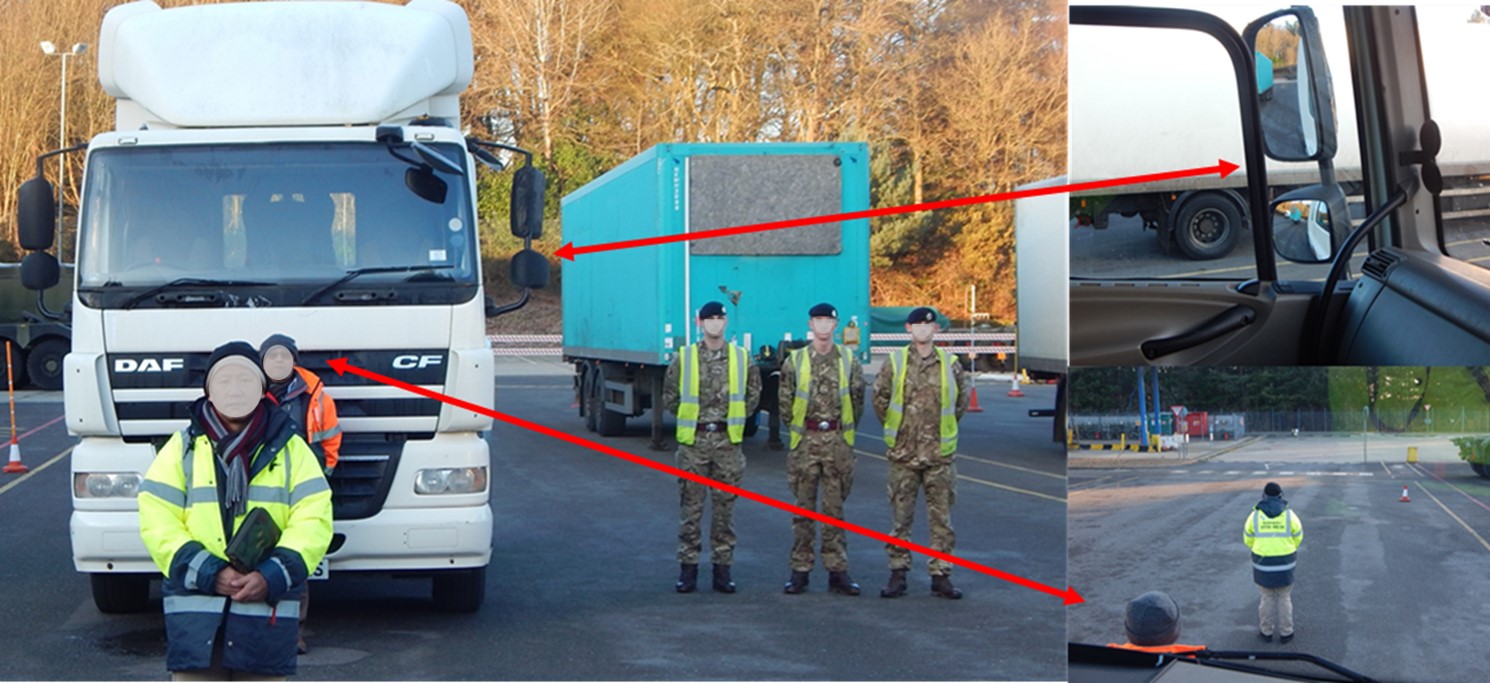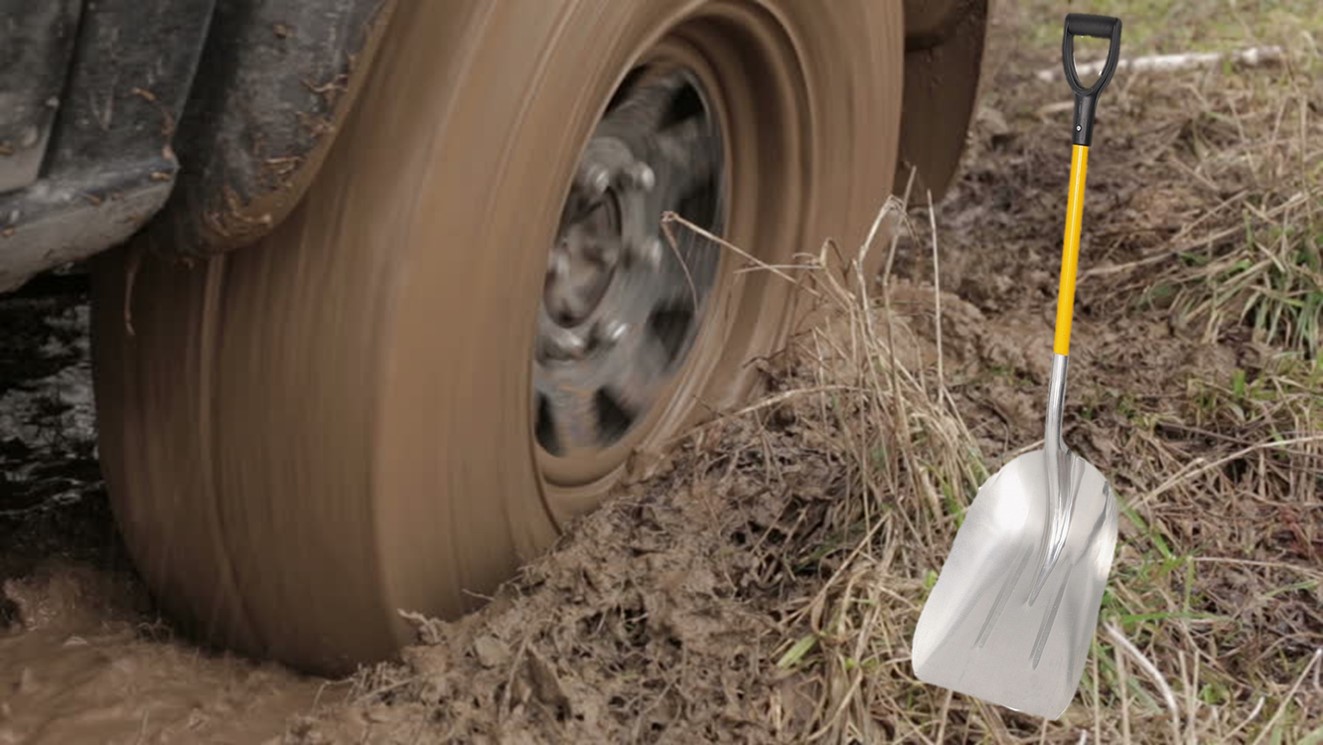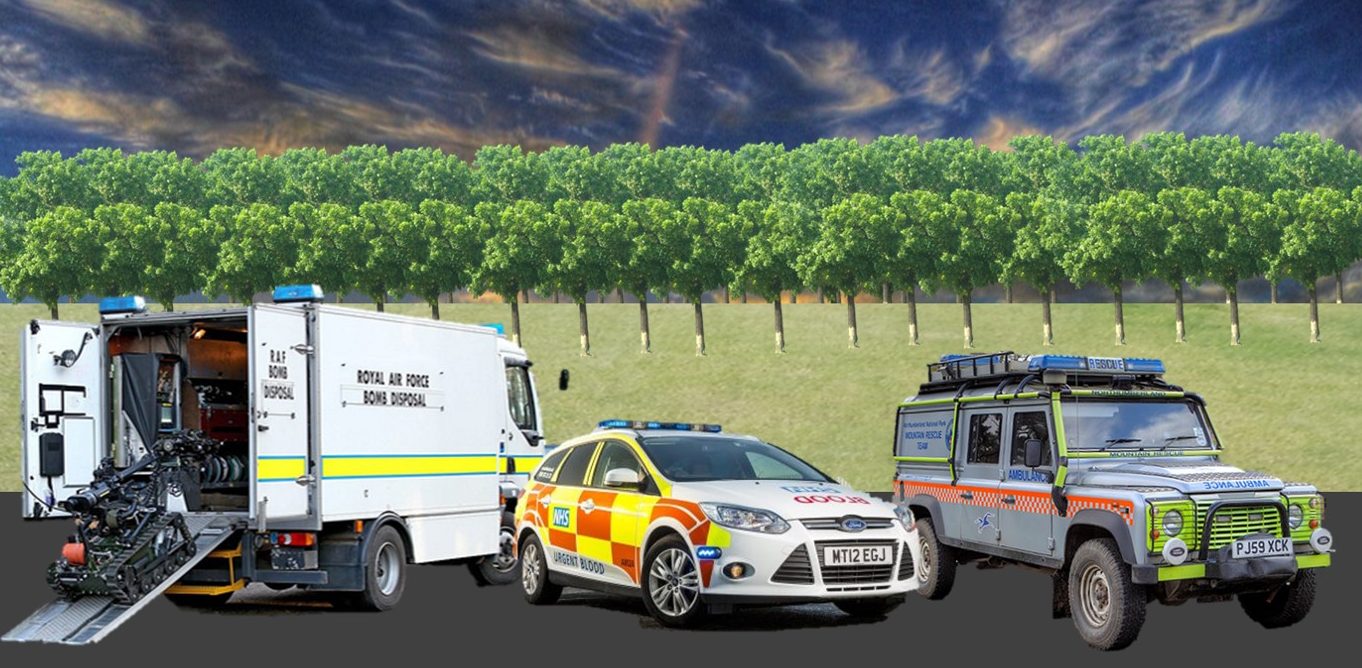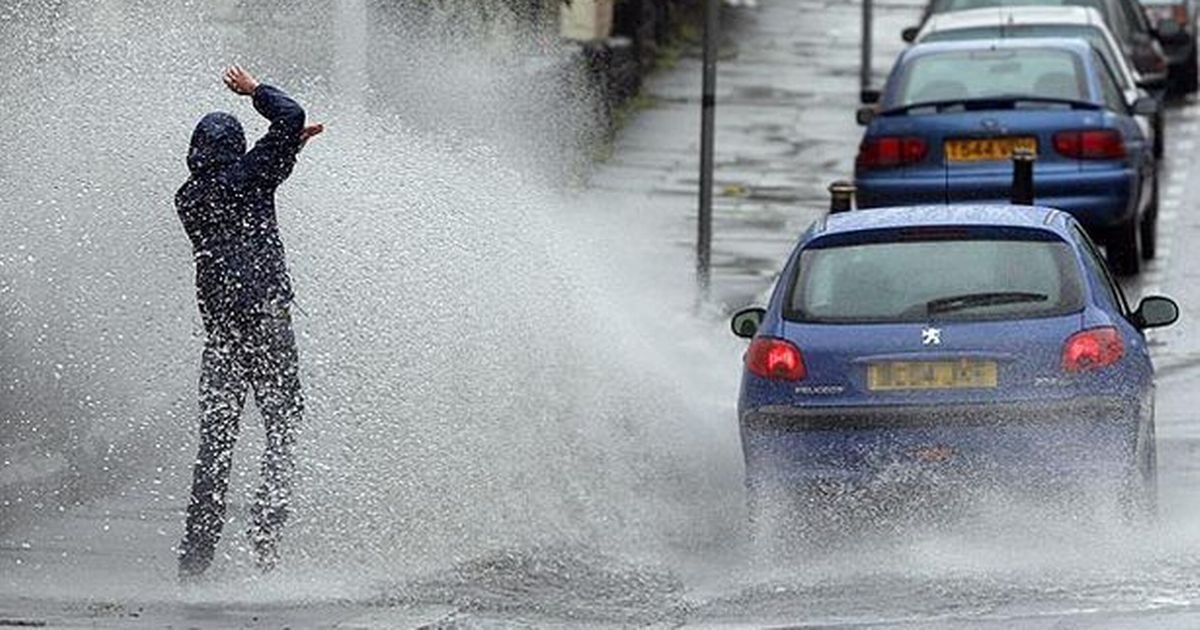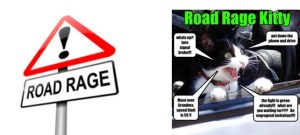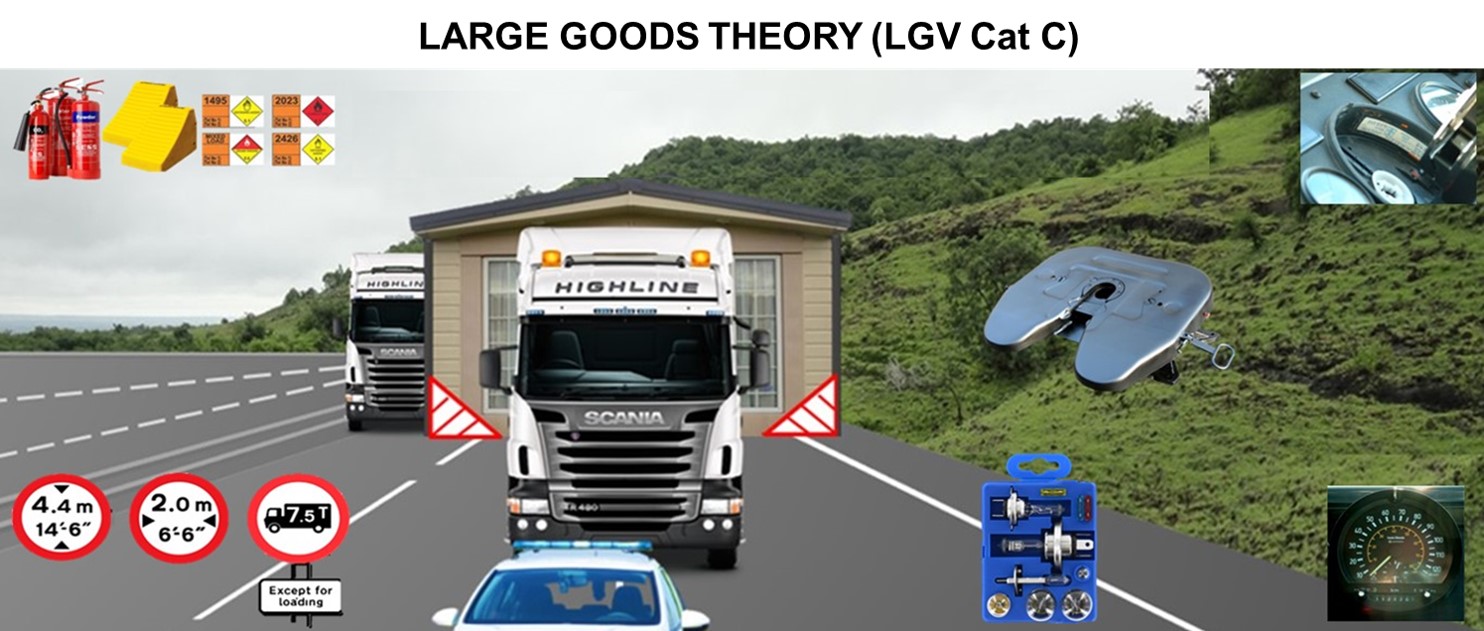ATTITUDE & ALERTNESS LGV
When driving a large goods vehicle (LGV) you are not just responsible for the weight, height and length of the vehicle you are also responsible for getting your load safely to its destination in the same condition as at commencement of the journey.
BLIND SPOTS
Unlike a car, the blind spots on an LGV cab are immense. You do not have a rear view mirror to check on what is behind you and very often cars will be
following you closely and you will not be able to see them in your mirrors.
On the nearside of your cab you will have two mirrors. One is for normal view and the other is wide angled to allow you, depending on the length of your vehicle, to see the rear wheels of your trailer.
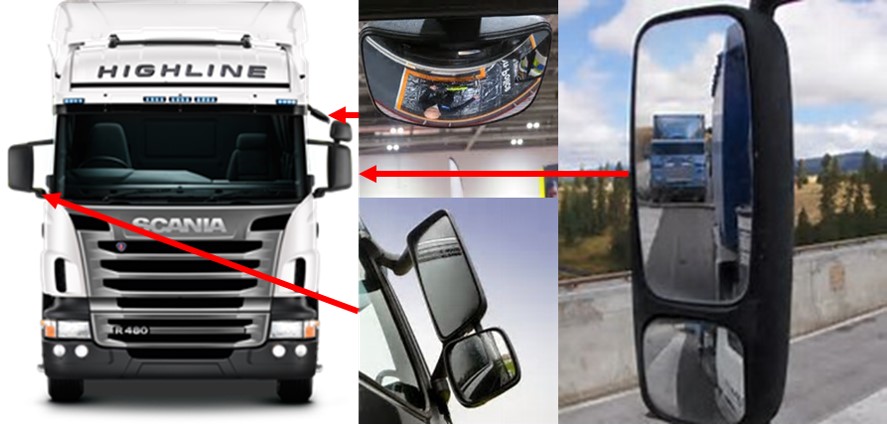 In addition there will also be a kerb mirror fitted to the outside of your cab. This mirror allows you to see pedestrians and cyclist alongside you.
In addition there will also be a kerb mirror fitted to the outside of your cab. This mirror allows you to see pedestrians and cyclist alongside you.
At the front of you vehicle, above the windscreen, a further mirror has now been fitted which allows you to see small children or cyclists crossing your path when you are stationary. On the offside (drivers side) there are also two mirrors, one being wide angled. You must make sure that all of your mirrors are clean and properly adjusted.
The example picture above shows clearly the problems that a driver will encounter. You cannot see the three men stood to the side of the vehicle, you can see the blue trailer in your mirrors though. Standing at the front of the vehicle is a member of the public, you can see him from the drivers seat inside the cab. If this were a small child crossing at a junction, you would not see them. On newer vehicles an additional mirror is now fitted. The Vehicle above has one fitted, this warns the driver what is physically in front of his vehicle. Other restrictions you will find are door pillars. These create an additional blind spot.
If you are driving a cab fitted with a bunk (sleeper cab) your blind spot checks are impaired by the additional size of the cab.
You have to lean forwards and physically look out of the side window to make sure that it is safe to move off. Never leave this to chance as situations can change in a fraction of a second.
WHEELS AND TYRES
Before embarking on a journey ensure that wheel nuts are tightened correctly and that you have carried out the entire walk around checks as mentioned in the section. The Vehicle’. You cannot foresee a puncture as these happen spontaneously.
 If the front tyre bursts whilst you are driving you should hold the steering wheel firmly and do not brake aggressively but allow your vehicle to come gently to a halt. When tyres burst, because of the extreme pressure debris will be scattered over the carriageway and can cause damage to other vehicles and pedestrians.
If the front tyre bursts whilst you are driving you should hold the steering wheel firmly and do not brake aggressively but allow your vehicle to come gently to a halt. When tyres burst, because of the extreme pressure debris will be scattered over the carriageway and can cause damage to other vehicles and pedestrians.
 Please do not try to retrieve if driving on a motorway.
Please do not try to retrieve if driving on a motorway.
It is always advisable to use a satellite navigation system (Sat-Nav) to help plan and achieve a successful journey. On occasions, as you are aware, a Sat-Nav can (and often does) give you the incorrect information. When driving in busy traffic and you find you have gone the wrong way. because of the size of the vehicle you must drive on until you find a safe place to stop.
When driving in rural areas (countryside) the edge of the road will be marked with a solid white line. Avoid parking on the other side of the white line (verge) as you may find it extremely difficult to move off again when required.
One of the other problems when parking on a verge is when moving off you could leave mud on the road causing a danger to other road users. If you do leave mud on the road it is your responsibility to clean it up.
MOBILE PHONE & SAT-NAV
When driving an LGV your timetables and destinations can change within a very short space of time. Unless on hands free, if caught answering a mobile phone will result in a 6 point penalty and several thousand pounds in fines.
Fines are greater for this as it is a professional licence. If you are unfortunate enough not to have hands free you must stop in a suitable place and return the call.
EMERGENCY VEHICLES
The police and traffic officers could possibly pull you over to check on your vehicle and its weight. They also carry out spot checks to make sure all paperwork is in order. If an officer wants you to stop they will flash their headlights, indicate left and, if in front of you, point to the left. Only pull up on the left when it is safe to do so.
In addition to the blue lights of the police, fire and ambulance services, you need to be aware of other vehicles that display blue flashing lights. They are as follows:
Bomb disposal. Blood transfusion. Mountain rescue.
If a vehicle displays a green flashing light this is a doctor answering an emergency call.
Highways Agency vehicles will display flashing amber and red lights.
ATTITUDE
Your attitude on the road is important and you must treat other road users and pedestrians with courtesy and consideration. As you are a large vehicle you will create a great deal of spray in wet conditions. It is important to understand that drenching a pedestrian, no matter how amusing it may be to you, is a criminal offence. ALWAYS avoid splashing pedestrians.
The wearing of seat-belts, if fitted, is required by law. You can only remove your seatbelt when the vehicle is stationary and the engine is stopped.
The only time you can remove your seatbelt when driving is when carrying out a reverse manoeuvre, your deliveries are less than 50 metres apart or you have a valid medical exemption certificate.
it is illegal to drink alcohol and take drugs whilst driving. Remember what you have the previous day may still be in your system as well.
The taking of certain medication can seriously affect your driving ability
and judgement. You must always read the label and if the medication causes drowsiness and advises you not to drive, then don’t. All of these factors will reduce your coordination and concentration. They will, however, increase your confidence but will diminish your judgement and will lead to the reduced ability to react to hazards (reduce control).
Tiredness can also be a major factor in accidents. A number of vehicle accidents are lack of sleep related and happen between 2 am and 7 am. Driving for long periods can cause fatigue and drivers become unaware of their tiredness. The number of lack of sleep related incidents (SRVI) are probably work related and the percentage which involves commercial vehicles is 40%. If you find that you are tired whilst driving you should stop. The majority of incidents occur on Motorways and this affects males under the age of 30.
Your attitude to other road users is very important. Road rage is illegal and if caught demonstrating this, you will find yourself liable to prosecution. If you find yourself victim to other road users lack of consideration, you must not react. You should not sound your horn in annoyance or flash your lights. Hand gestures are also inappropriate. The highway code tells you that you should stay calm and if necessary stop and take a break.



